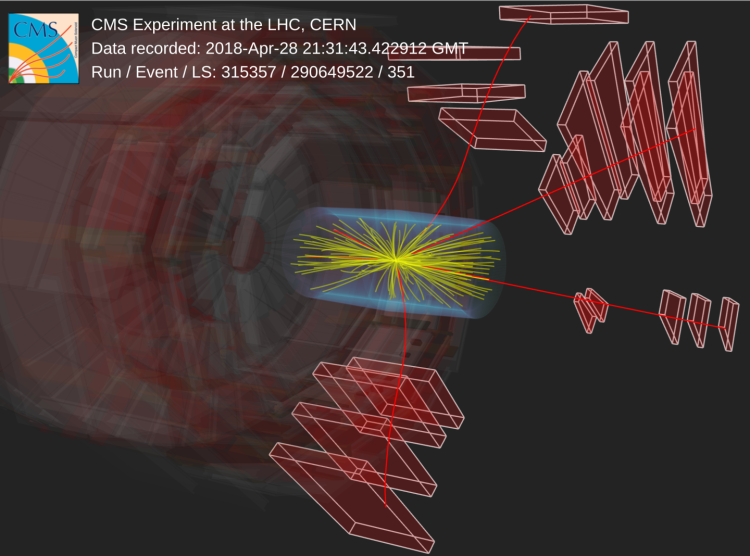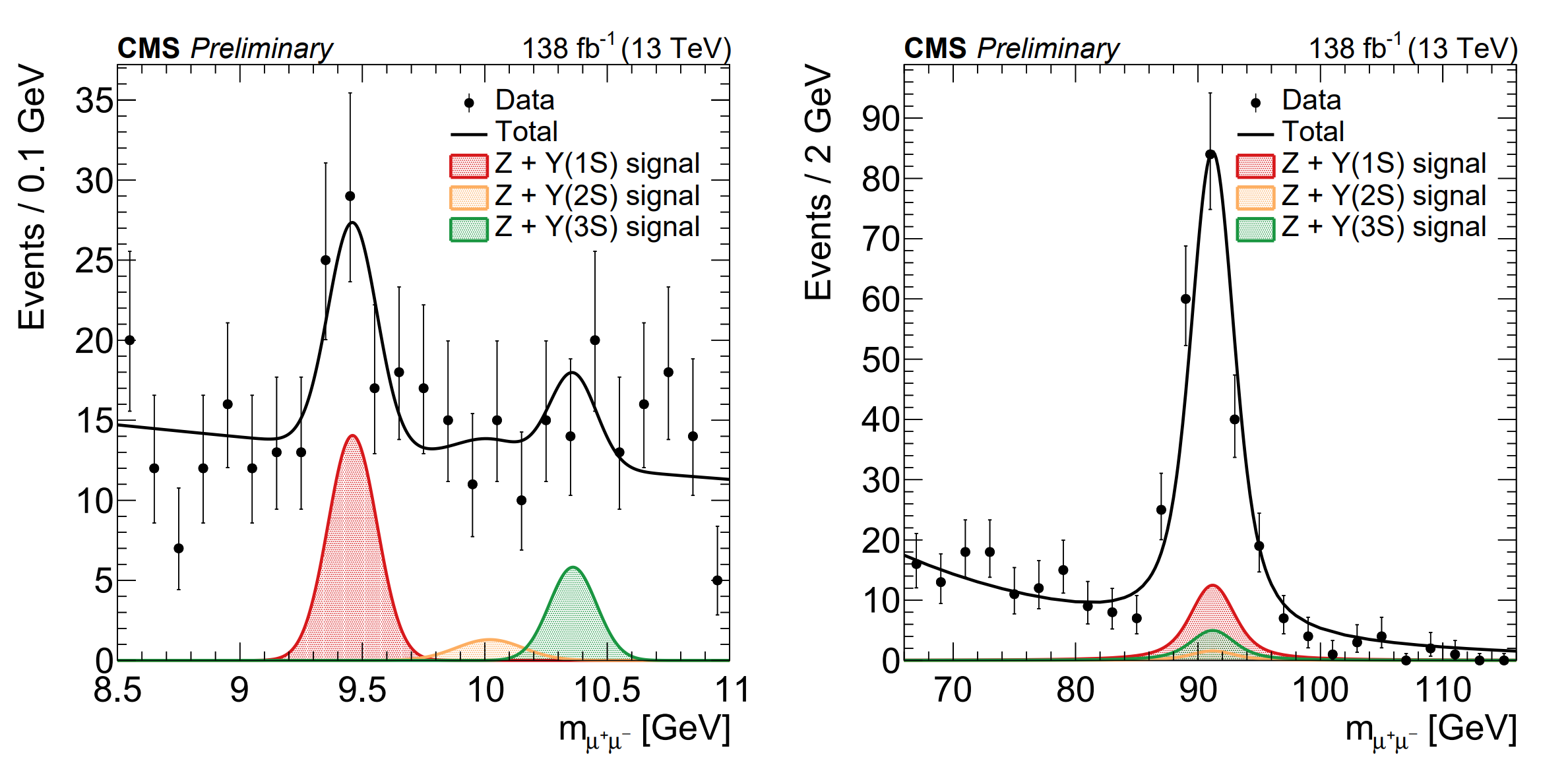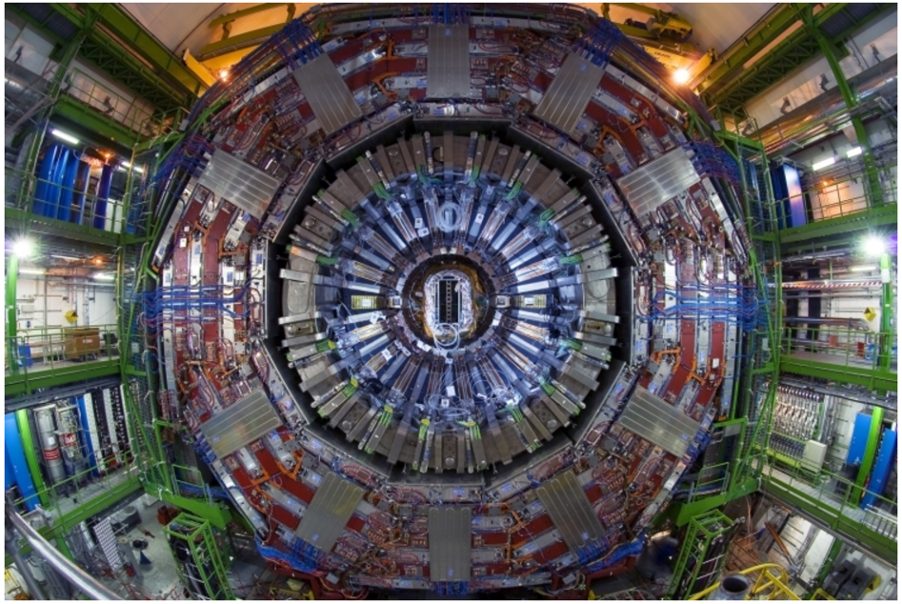
CMS discovers associated production of a Z boson and an ϒ meson.
At the CMS experiment, we have observed for the first time an exceptionally rare process: the associated production of a Z boson with an ϒ(1S) meson, the lightest bound state of a bottom quark-antiquark pair. This observation was made using a large data set collected during Run 2 of the LHC from 2016 to 2018. After carefully analyzing the data and accounting for backgrounds, we identified 35 ± 9 such events — an extraordinarily small number considering the enormous number of collisions that occurred during this period.
This process is remarkable because it probes multiple facets of the proton structure. The production of a Z boson alone requires high-energy interactions involving the partons: quarks, antiquarks, and gluons inside the proton. Simultaneously creating an ϒ(1S) meson involves even more complex dynamics, with contributions from gluon-gluon interactions. These rare events provide a unique lens to study the interplay between electroweak physics and quantum chromodynamics (QCD), the theory describing the strong interaction.
The observation also sheds light on double-parton scattering (DPS) processes, where two pairs of partons inside the two protons independently interact with each other at the same time. The Z+ϒ(1S) events are particularly interesting because they can arise from both single-parton scattering (SPS) or DPS. By comparing the observed rates and distributions of these events to theoretical predictions, we can disentangle the two contributions, and improve our understanding of how partons are spatially distributed and correlated inside the proton.
A key result of the analysis is the measurement of an effective cross section, σeff, a parameter that characterizes the effective spatial overlap of two partons inside the proton. A small σeff indicates significant overlap, implying that partons are closely packed, while a large value suggests less overlap. Our study measured σeff both inclusively and as a function of the momentum of the Z or ϒ(1S) in the plane transverse to the beamline, revealing how DPS contributions vary across different kinematic regimes. These measurements provide important constraints for QCD models and offer new insights into the proton’s internal structure.
Detecting this rare process required the CMS detector’s exceptional capabilities. The ϒ(1S) was identified through its decay into two muons, a clean signature in the CMS muon system. Similarly, the Z boson was reconstructed from its decays into muons, creating a highly distinctive event topology. These tools were crucial for isolating the signal from the overwhelming background in a data set of billions of collisions.
Above: A candidate Z + ϒ(1S) event recorded with the CMS detector in 2018. The Z and ϒ(1S) each decays to a pair of muons, which are visible as the red trajectories. The display is interactive and can also be viewed on a full, interactive page here.

Above: Muon pair invariant mass distributions showing the peaks of the ϒ mesons (left) and Z boson (right). Final states with excited ϒ mesons, Z + ϒ(2S) and Z + ϒ(3S), represented by the yellow and green peaks in the figures, showed only a few events; hence, we did not pursue them for further study.
The observation of this rare process not only demonstrates the precision and sensitivity of the CMS experiment but also deepens our understanding of the proton structure and QCD. Probing DPS with rare processes, such as Z+ϒ(1S) production, offers a new window into the correlations between partons inside the proton. As we anticipate more data from the ongoing Run 3, these results pave the way for further studies of DPS and other rare phenomena at the LHC.
Written by: Mary Hadley, for the CMS Collaboration
Edited by: Muhammad Ansar Iqbal
Read more about these results:
-
CMS Physics Analysis Summary (BPH-23-007): " Measurements of the production of Υ(1S) mesons in association with Z bosons in pp collisions at 13 TeV "
-
Display of collision events: CERN CDS
-
@CMSExperiment on social media: Bluesky - Facebook - Instagram - LinkedIn - TikTok - Twitter/X - YouTube

